
When it comes to fruit, there are plenty of options to choose from. Some fruits are yellow, some are green, and some are even purple. However, there's something special about fruits that are red in colour. They're bold, vibrant, and packed with flavour. In this article, we'll take a closer look at some of the most popular fruits that are red in colour.
Strawberries

Strawberries are a classic summer fruit that are loved by many. They're small, juicy, and packed with flavour. Not only are they delicious, but they're also packed with nutrients. They're high in vitamin C, folate, and potassium. They also contain antioxidants that can help protect your body from free radicals.
Cherries

Cherries are a sweet and juicy fruit that come in two varieties: sweet and sour. Sweet cherries are perfect for snacking, while sour cherries are often used in baking. Cherries are high in antioxidants and anti-inflammatory compounds, making them great for your health. They're also a good source of fibre and vitamin C.
Raspberries

Raspberries are a delicate fruit that have a sweet and slightly tart flavour. They're high in fibre and vitamin C, and they also contain antioxidants that can help protect your body from damage. Raspberries are great for snacking, but they're also perfect for adding to smoothies or using in baked goods.
Watermelon

Watermelon is a refreshing and juicy fruit that's perfect for hot summer days. It's high in vitamin C and contains a good amount of potassium. Watermelon is also a good source of lycopene, which is an antioxidant that can help protect your body from damage.
Pomegranates

Pomegranates are a unique fruit that are packed with flavour. They're high in antioxidants and contain anti-inflammatory compounds that can help protect your body from damage. Pomegranates are also a good source of vitamin C, fibre, and vitamin K.
Apples

While apples are often thought of as being green, there are actually many varieties that are red in colour. Apples are high in fibre and vitamin C, and they're also a good source of antioxidants. Apples are perfect for snacking, but they're also great for using in recipes like apple pie or apple crisp.
Cranberries

Cranberries are a tart fruit that are often used in sauces and juices. They're high in antioxidants and contain compounds that can help prevent urinary tract infections. Cranberries are also a good source of vitamin C and fibre.
Tomatoes
Tomatoes are a versatile fruit that are used in a variety of dishes. They're high in vitamin C and contain lycopene, which is an antioxidant that can help protect your body from damage. Tomatoes are perfect for salads, sandwiches, and pasta dishes.
Grapes
Grapes are a sweet and juicy fruit that come in a variety of colours, including red. They're high in antioxidants, and they're also a good source of fibre and vitamin C. Grapes are perfect for snacking, but they're also great for using in recipes like grape jelly or grape juice.
Conclusion
There are plenty of fruits that are red in colour, and each one has its own unique flavour and nutritional benefits. Whether you're snacking on strawberries, adding raspberries to your smoothie, or using tomatoes in your pasta dish, these fruits are sure to add a burst of colour and flavour to your meals. So next time you're at the grocery store, be sure to pick up some of these delicious and nutritious fruits.
Related video of Fruits Red In Colour

What is Frontier Personal Item?
Frontier Airlines is a low-cost carrier that allows passengers to bring one personal item on board for free. This item must fit under the seat in front of the passenger and must not exceed the maximum dimensions of 18 x 14 x 8 inches. This personal item can be a purse, briefcase, laptop bag or backpack.

What are the Benefits of Bringing a Personal Item on Board?
Bringing a personal item on board can save you money on baggage fees. Frontier Airlines charges for carry-on bags and checked bags, and these fees can add up quickly. By packing everything you need in a personal item, you can avoid these fees and keep your travel costs down.
What are the Restrictions on Personal Items?
Frontier Airlines has strict rules on what can be considered a personal item. The item must fit under the seat in front of you and must not exceed the maximum dimensions of 18 x 14 x 8 inches. If your item does not meet these requirements, you will be charged for a carry-on bag or checked bag.

What are Some Tips for Packing a Personal Item?
When packing your personal item, it's important to pack efficiently. Here are some tips:
- Roll your clothes instead of folding them to save space
- Use packing cubes to keep your items organized
- Wear your bulkiest items on the plane, such as a jacket or boots
- Limit your toiletries to travel-sized containers
What are Some Examples of Acceptable Personal Items?
Here are some examples of acceptable personal items:
- A small backpack
- A purse or clutch
- A laptop bag
- A briefcase

What are Some Examples of Unacceptable Personal Items?
Here are some examples of unacceptable personal items:
- A large backpack
- A duffel bag
- A garment bag
- A shopping bag

What are the Fees for Carry-On Bags and Checked Bags?
If your personal item does not meet the requirements or if you need to bring additional items, you will be charged for carry-on bags and checked bags. The fees vary based on when you purchase your baggage and whether you are a member of Frontier's Discount Den program.
How Can You Avoid Baggage Fees?
You can avoid baggage fees by packing everything you need in a personal item that meets the requirements. If you need to bring additional items, consider purchasing a bundle that includes both a carry-on bag and a checked bag. Another option is to become a member of Frontier's Discount Den program, which offers discounts on baggage fees.
What is the Discount Den Program?
The Discount Den program is a membership program offered by Frontier Airlines that provides exclusive access to discounted fares, baggage fees, and more. Members of the program can save up to $60 on baggage fees per round trip and can take advantage of other discounts and perks.

How Can You Join the Discount Den Program?
To join the Discount Den program, you can visit the Frontier Airlines website and sign up for an annual membership. The membership fee is $59.99 per year and can be used for up to six people on the same reservation. Once you are a member, you can start taking advantage of exclusive discounts and perks.
What are Some Other Tips for Flying Frontier?
Here are some other tips for flying Frontier:
- Check-in online to save time at the airport
- Pack light to avoid baggage fees
- Bring your own snacks and drinks to save money
- Be prepared for a no-frills experience
Conclusion
Frontier Personal Item Reddit is a popular topic among travelers who want to save money on baggage fees. By packing efficiently and bringing a personal item that meets the requirements, you can avoid these fees and keep your travel costs down. Additionally, becoming a member of Frontier's Discount Den program can provide even more savings and exclusive perks. Remember to check-in online, pack light, and be prepared for a no-frills experience when flying Frontier.
Related video of Frontier Personal Item Reddit: What You Need to Know

Fried potatoes in French, also known as pommes frites or French fries, is a popular snack or side dish that is enjoyed all over the world. Despite its name, it is believed that this dish actually originated in Belgium, not France. Nonetheless, it has become a staple of French cuisine and is often served with steak, burgers, and other hearty meals.
The History of French Fries
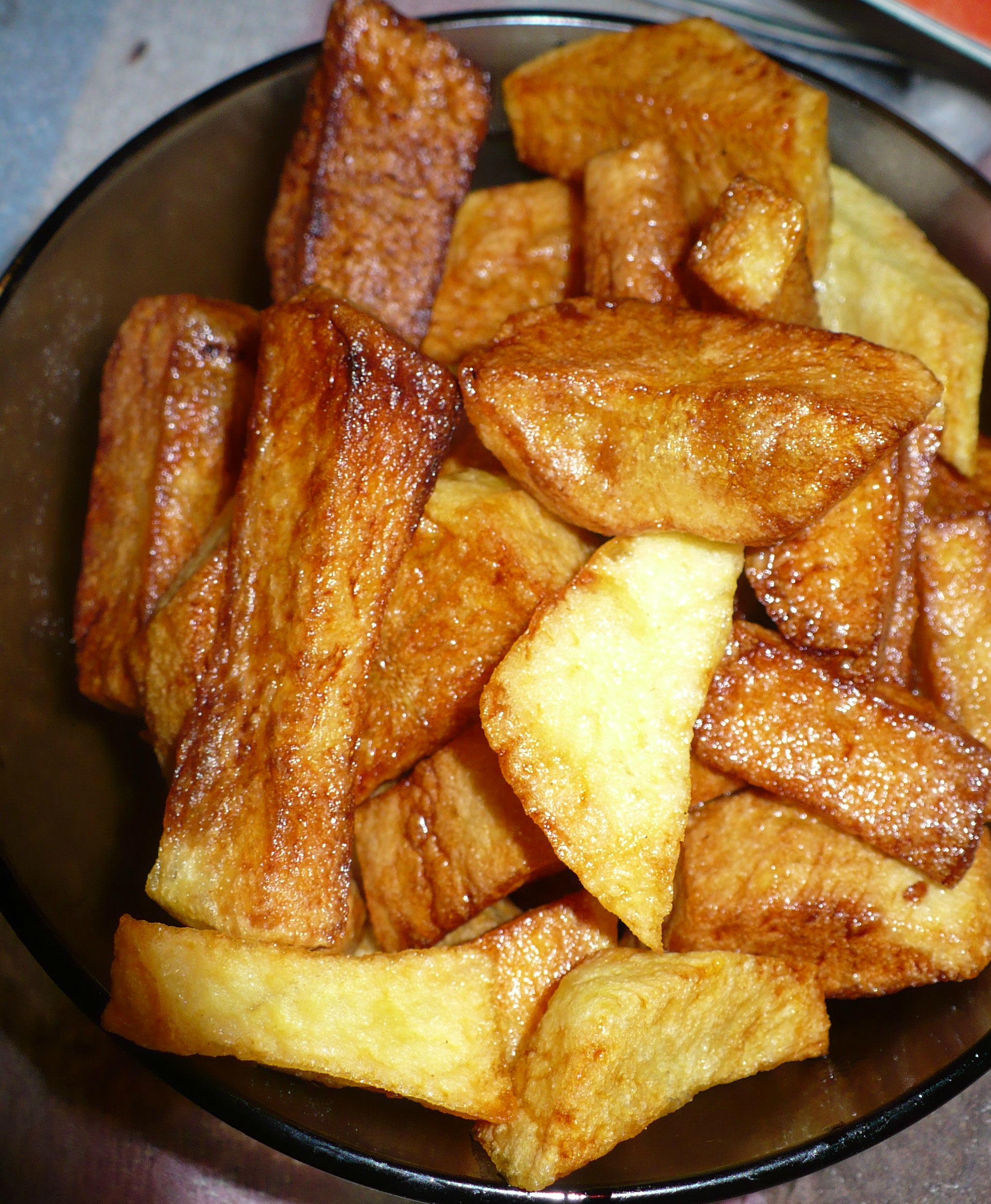
The history of French fries is a bit murky, but it is believed that they were first created in the late 17th century by French-speaking Belgians. These Belgians were known for their love of fried fish, and they would often serve fried potatoes as a substitute when fish was not available. Eventually, the dish became popular in France and was given the name "pommes frites," which translates to "fried potatoes."
The Perfect French Fry

There are many opinions on what makes the perfect French fry, but there are a few key factors that most people can agree on. Firstly, the potatoes used should be high in starch and low in moisture. This helps to create a crispy exterior while keeping the inside soft and fluffy. Secondly, the fries should be fried twice at different temperatures to achieve the perfect texture. Finally, the fries should be seasoned with salt and served hot.
How to Make French Fries at Home

Making French fries at home is not difficult, but it does require a bit of patience and attention to detail. Firstly, you will need to choose the right potatoes. Russet potatoes are a good choice, as they are high in starch and low in moisture. Next, you will need to cut the potatoes into thin, even strips. Once this is done, you will need to soak the fries in cold water for at least 30 minutes to remove excess starch.
After soaking, the fries should be dried thoroughly with paper towels. They can then be fried in oil at a temperature of 325°F for 3-4 minutes, or until they are light golden brown. Once this is done, the fries should be removed from the oil and allowed to cool for a few minutes. They can then be fried again at a higher temperature of 375°F for 1-2 minutes, or until they are crispy and golden brown.
French Fry Variations

While traditional French fries are delicious on their own, there are many variations that can be made to suit different tastes. For example, some people like to add cheese or bacon to their fries, while others prefer to dip them in ketchup, mayonnaise, or aioli. In France, it is common to serve fries with a variety of sauces, including hollandaise, béarnaise, and tartar sauce.
The Health Benefits of French Fries

While French fries are not typically thought of as a healthy food, they do offer some nutritional benefits. Potatoes are high in potassium, vitamin C, and fiber, which can help to regulate blood pressure, boost the immune system, and aid in digestion. However, it is important to note that most French fries are fried in oil and seasoned with salt, which can contribute to high cholesterol and blood pressure if consumed in large quantities.
In Conclusion
Fried potatoes in French, or French fries, are a beloved dish that has been enjoyed for centuries. Whether you prefer them plain or with a variety of toppings and sauces, there is no denying the appeal of these crispy, golden-brown delights. While they may not be the healthiest food option, they are certainly a tasty one that is worth indulging in every once in a while.
Related video of Fried Potatoes In French

Starting university can be both exciting and overwhelming. As a freshman, it's important to understand the different terms used throughout the academic years. This article will help explain the differences between freshman, sophomore, junior, and senior years in university.
What is a Freshman?

A freshman is a first-year student in university. This is typically the year that students are adjusting to university life and exploring different areas of study. Freshman year is also a time for students to get involved in clubs and organizations on campus.
What is a Sophomore?

A sophomore is a second-year student in university. During this year, students have a better understanding of their major and are able to take classes that are more specific to their interests. Sophomore year is also a time for students to start thinking about internships and other opportunities in their field of study.
What is a Junior?
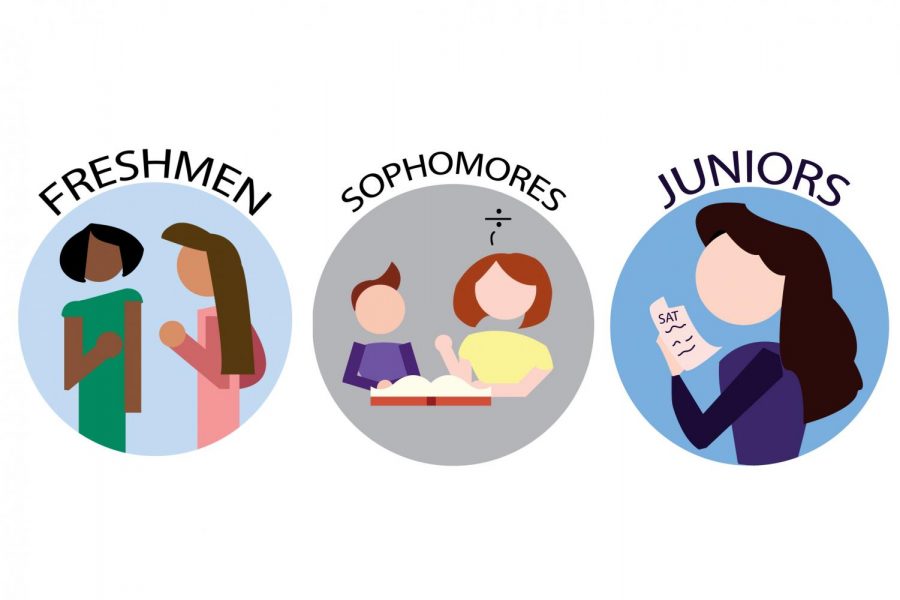
A junior is a third-year student in university. This year is typically the most challenging academically as students are taking more advanced courses in their major. Junior year is also a time for students to start thinking about their post-graduation plans and preparing for the job market.
What is a Senior?
A senior is a fourth-year student in university. This year is the final year of undergraduate study and is a time for students to reflect on their academic journey. Senior year is also a time for students to finalize their post-graduation plans and prepare for the next chapter of their lives.
Final Thoughts
Understanding the differences between freshman, sophomore, junior, and senior years in university can help students navigate their academic journey. Each year comes with its own set of challenges and opportunities, and it's important for students to make the most of their time in university.
Related video of Freshman Sophomore Junior Senior University
If you're someone who loves to cook or bake, you know that the quality of the ingredients you use can make or break a dish. One such ingredient that's commonly used in many recipes is eggs. Whether you're making an omelet for breakfast or whipping up a cake for dessert, fresh eggs are a must. But how long do fresh chicken eggs last? In this article, we'll explore the shelf life of fresh eggs and provide tips on how to properly store them.
What is the shelf life of fresh chicken eggs?

The shelf life of fresh chicken eggs can vary depending on a few factors, including how they're stored and their age when you purchase them. In general, fresh eggs can last anywhere from three to five weeks in the refrigerator.
If you're unsure about the age of your eggs, you can do a simple test to determine their freshness. Submerge the eggs in a bowl of water – if they sink to the bottom, they're fresh. If they float to the top, they're not as fresh and should be used soon.
How should you store fresh eggs?

The key to keeping your fresh eggs from spoiling too quickly is to store them properly. Here are a few tips:
- Store eggs in their carton, with the pointed end facing down. This helps to keep the yolk centered.
- Keep eggs in the main section of your refrigerator, rather than in the door. The temperature is more consistent here.
- Avoid washing eggs before storing them, as this can remove the protective coating on the shells.
- If you've cracked an egg and have leftover egg whites or yolks, store them in an airtight container in the refrigerator for up to four days.
What are some signs that your fresh eggs have gone bad?

While it's not always easy to tell if an egg has gone bad, there are a few signs to look out for:
- An off smell – if your eggs smell funky, they're likely past their prime.
- Discoloration – if the white or yolk appears discolored, it's a sign that the egg has spoiled.
- Unusual texture – if the egg white or yolk feels slimy or rubbery, it's time to toss it.
If you're ever unsure about the freshness of your eggs, it's better to err on the side of caution and throw them out.
Conclusion
Now that you know how long fresh chicken eggs last and how to store them properly, you can feel confident using them in your recipes. By following these tips, you'll be able to keep your eggs fresh and delicious for as long as possible.
Related video of Fresh Chicken Eggs Shelf Life: How Long Do They Last?
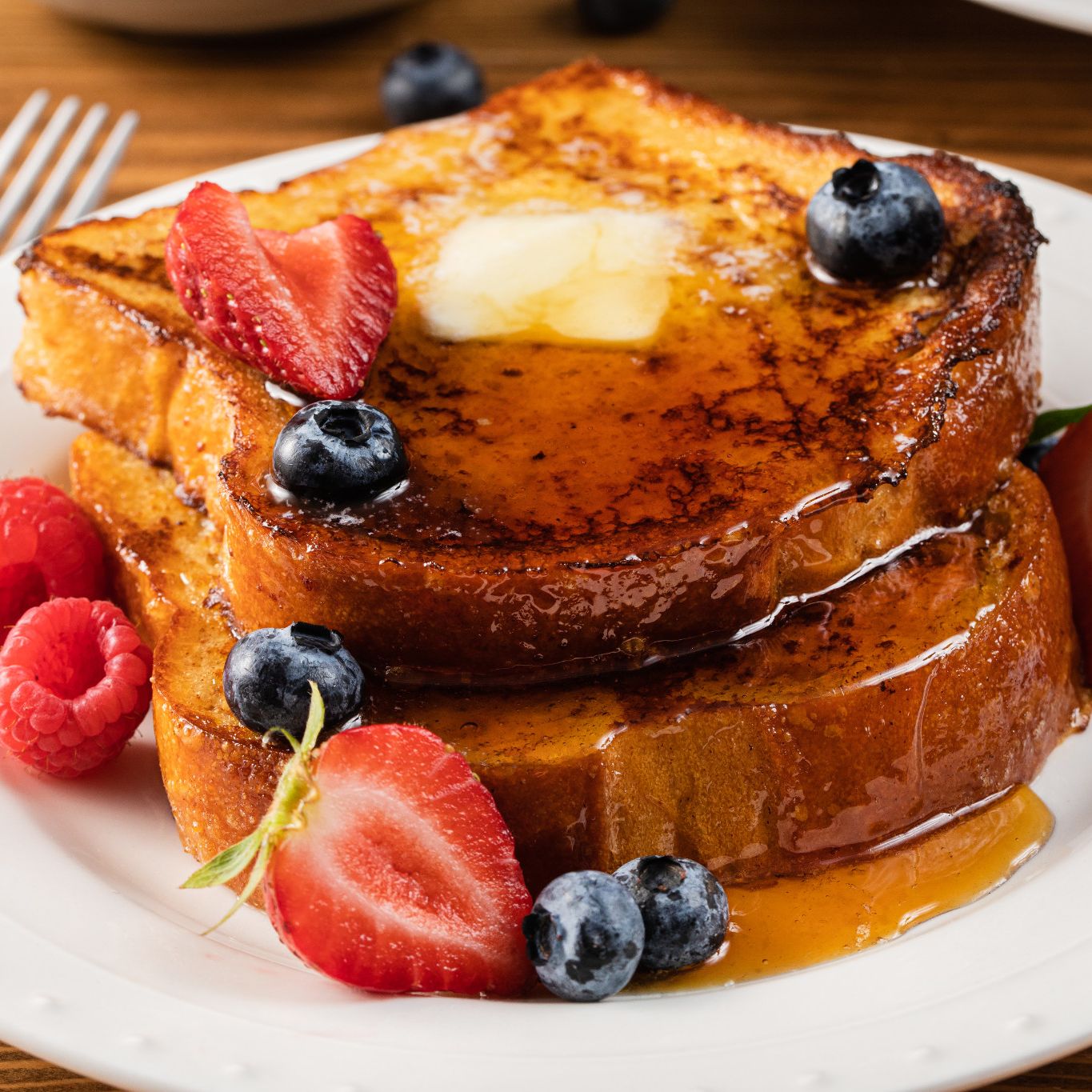
French toast is a classic breakfast dish that is loved by many. It is a simple dish made with bread, eggs, milk, and sugar. The bread is soaked in the egg mixture and then fried until golden brown. It is usually served with syrup or powdered sugar. But have you ever wondered how to order French toast in French? In this article, we will explore French toast in French and how to order it in France.
What is French Toast in French?

French toast in French is known as “pain perdu”. The literal translation of pain perdu is “lost bread”. This name comes from the fact that French toast is traditionally made from stale bread that would have otherwise been thrown away. Instead of wasting the bread, it was used to make a delicious breakfast dish.
How to Order French Toast in France

If you are in France and want to order French toast, you can say “une tranche de pain perdu s’il vous plaît”. This translates to “a slice of French toast please”. You can also ask for it to be served with syrup or powdered sugar by saying “avec du sirop” or “avec du sucre en poudre”.
Traditional French Toast Recipe

Here is a traditional French toast recipe:
- 4 slices of bread
- 2 eggs
- 1/2 cup of milk
- 2 tablespoons of sugar
- 1/2 teaspoon of vanilla extract
- Butter for frying
1. In a bowl, whisk together the eggs, milk, sugar, and vanilla extract.

2. Dip each slice of bread into the egg mixture, making sure to coat both sides.
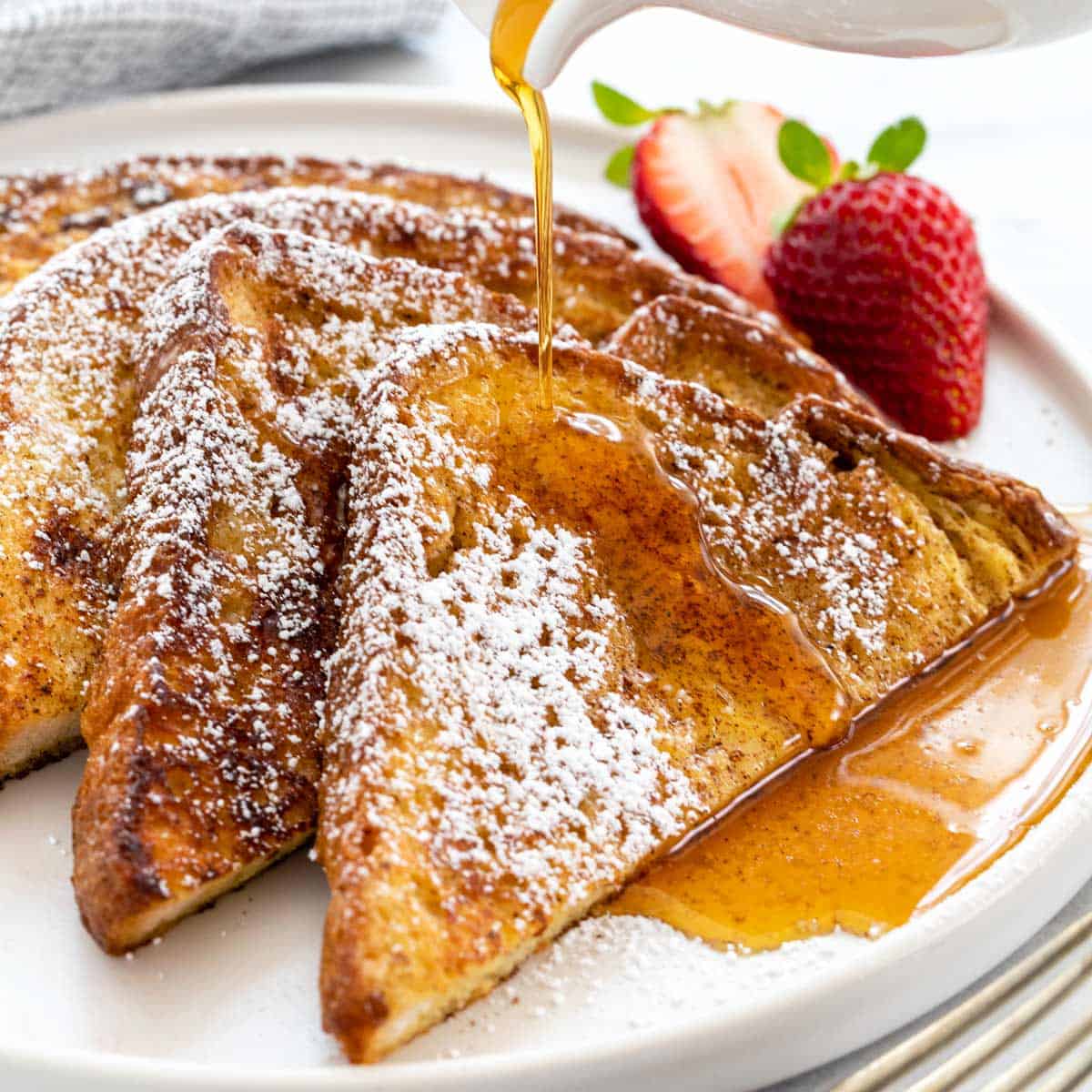
3. Melt butter in a frying pan over medium heat.

4. Fry each slice of bread in the butter until golden brown on both sides.

5. Serve with syrup or powdered sugar.
Variations of French Toast
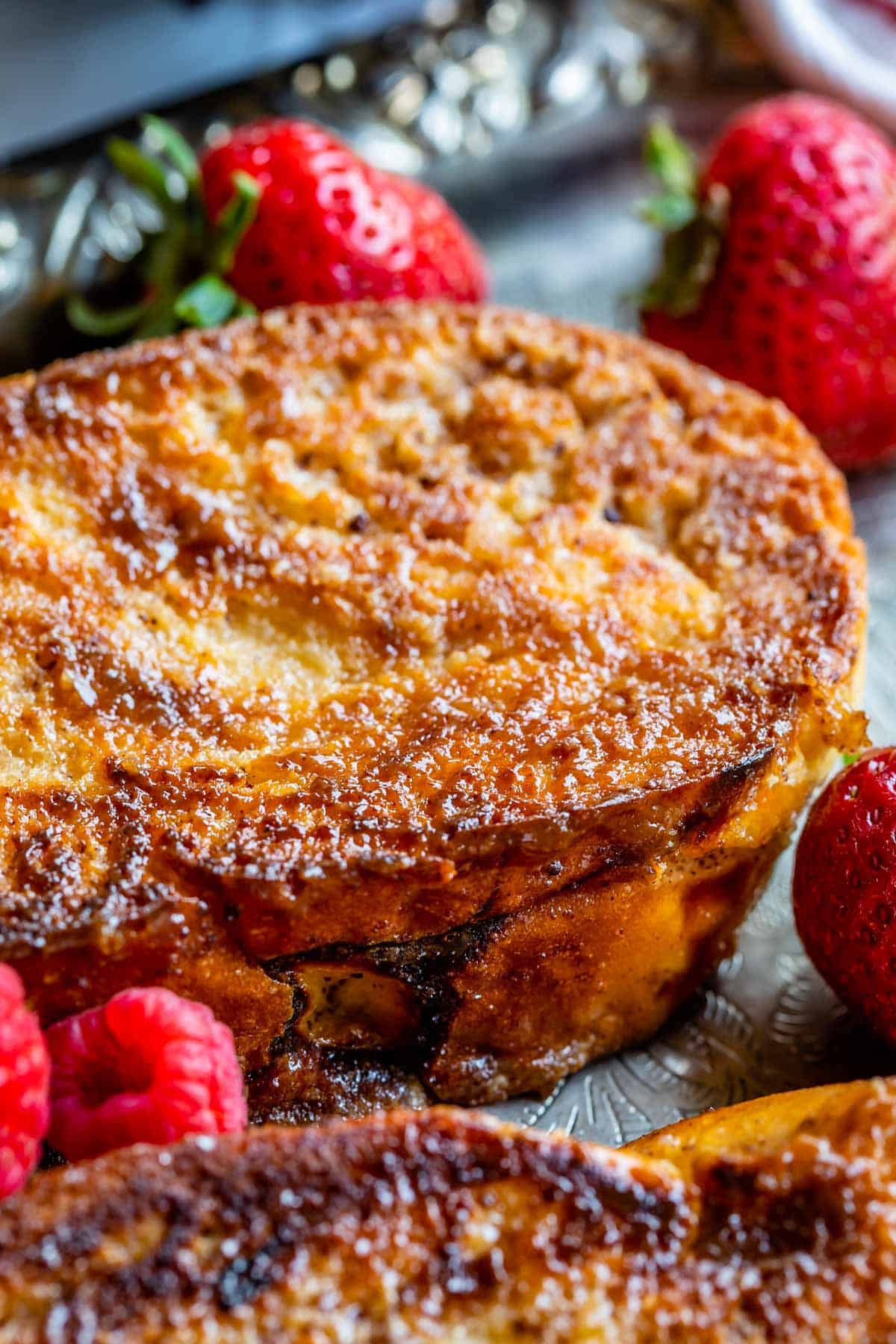
French toast can be made in many different ways. Here are a few variations:
- Brioche French Toast: Use brioche bread instead of regular bread for a richer flavor.
- Cinnamon French Toast: Add cinnamon to the egg mixture for a delicious cinnamon flavor.
- Stuffed French Toast: Cut a pocket into the bread and fill it with cream cheese or fruit before frying.
Conclusion
In conclusion, French toast in French is known as “pain perdu” and can be ordered in France by saying “une tranche de pain perdu s’il vous plaît”. It is a simple dish that can be made with just a few ingredients. There are also many variations of French toast that you can try. So why not give it a go and make some French toast for breakfast?
Related video of French Toast In French
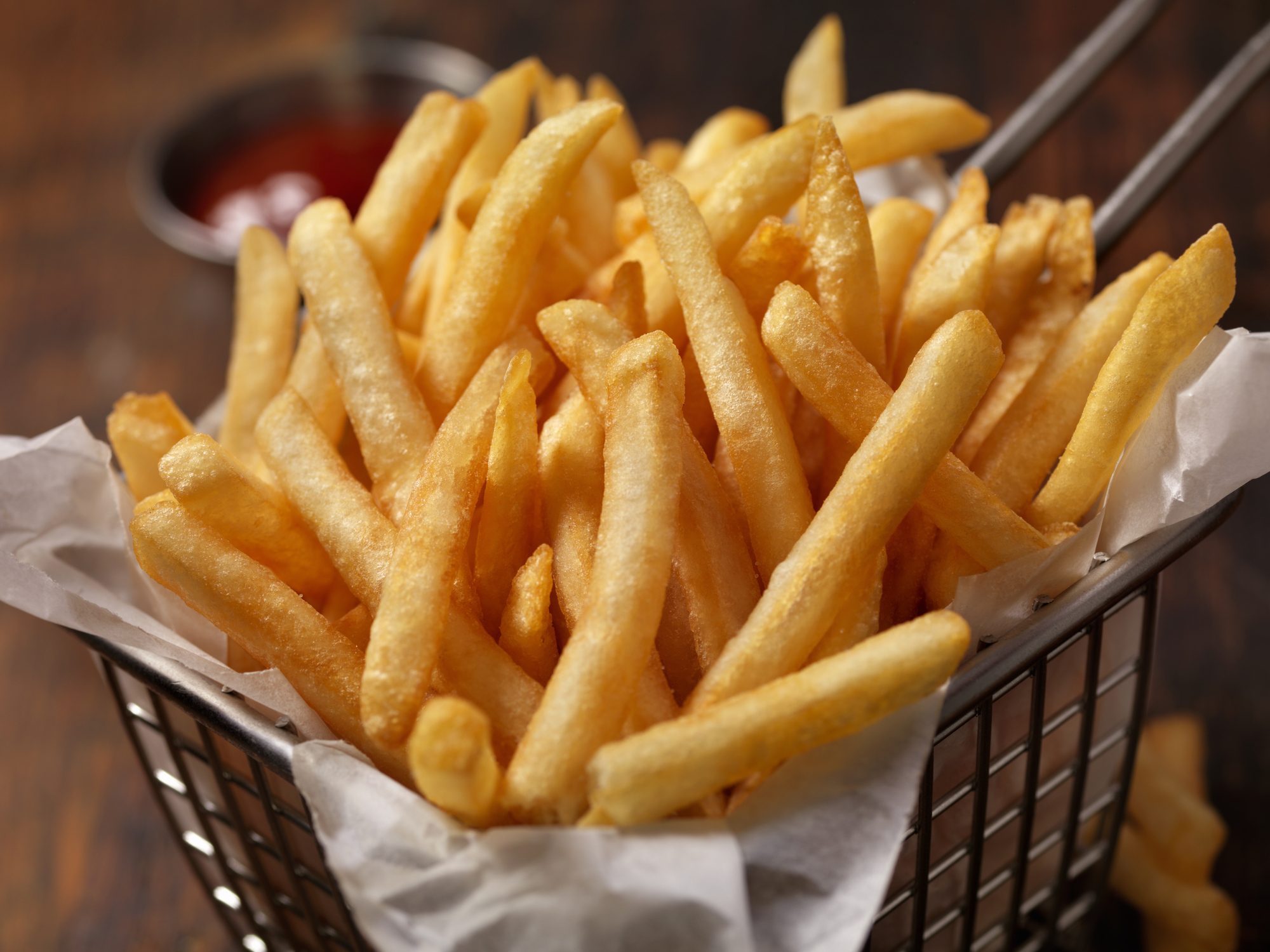
French fries, also known as "frites" in French, are a beloved snack and side dish all over the world. They are called "French fries" because it is believed that the dish originated in France. However, the French have their own unique way of referring to this delicious treat.
The French Name for French Fries
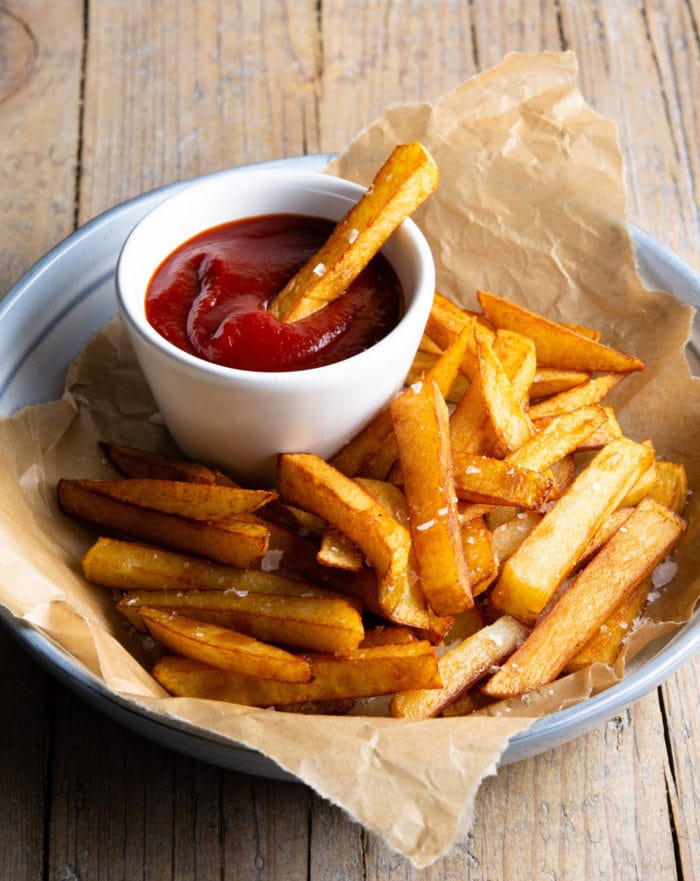
In France, French fries are called "pommes frites" which literally translates to "fried potatoes". The word "pommes" is used to refer to any type of potato dish, while "frites" specifically refers to the crispy, fried variety.
French fries are a popular snack in France and are often served as a side dish to accompany a main course. They are typically thinner and crispier than the American-style fries and are often seasoned with salt, pepper, and other herbs and spices.
The History of French Fries in France
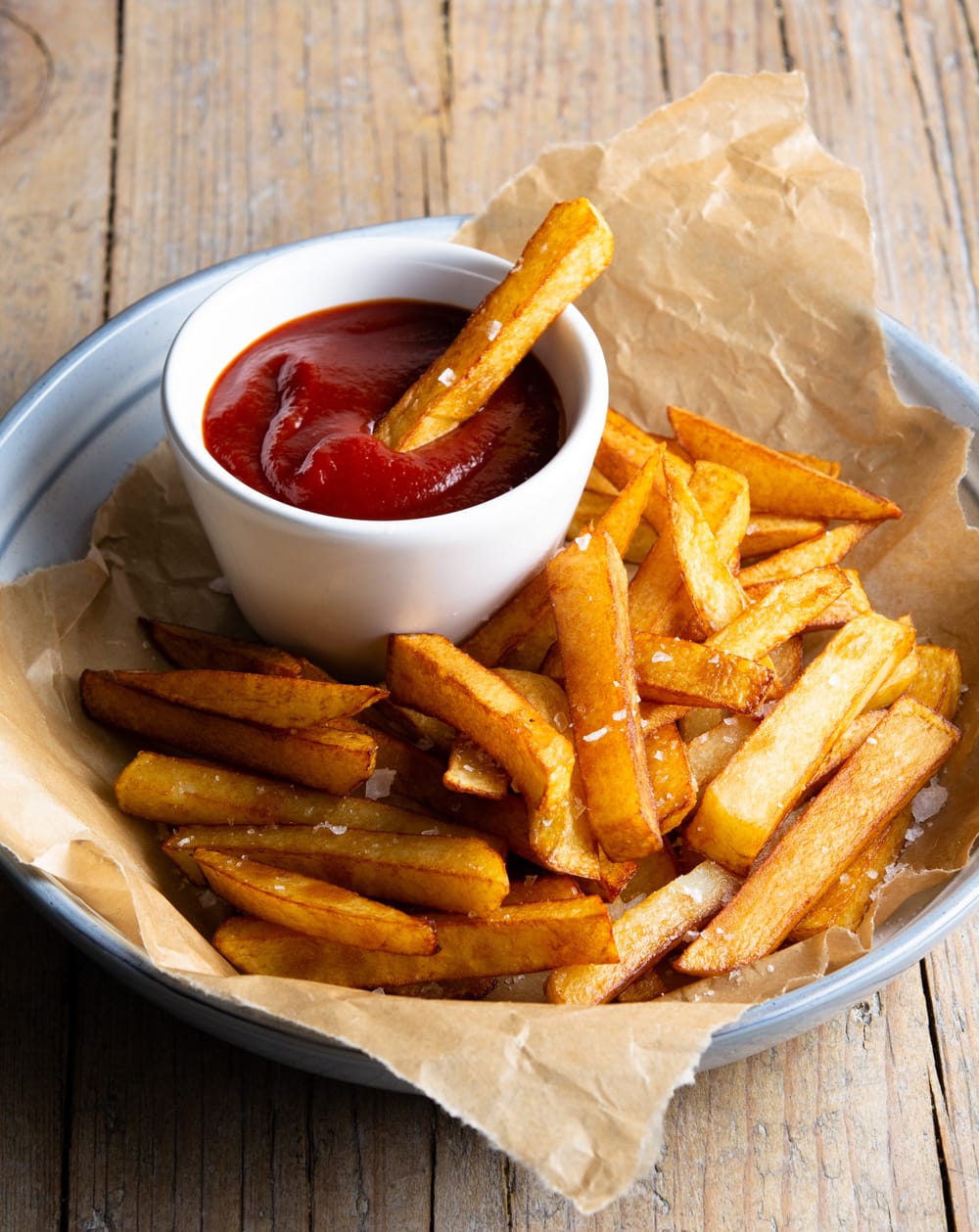
The history of French fries in France is somewhat disputed, but it is believed that they were first introduced to the country in the late 17th century. It is said that French soldiers first tasted the dish in Belgium, where it was known as "frites". They then brought the recipe back to France, where it quickly became popular.
French fries were initially served as a street food and were sold by vendors in the streets of Paris. They were typically served in a paper cone and were eaten with the fingers. Today, French fries are a staple of French cuisine and are served in restaurants all over the country.
How French Fries are Made
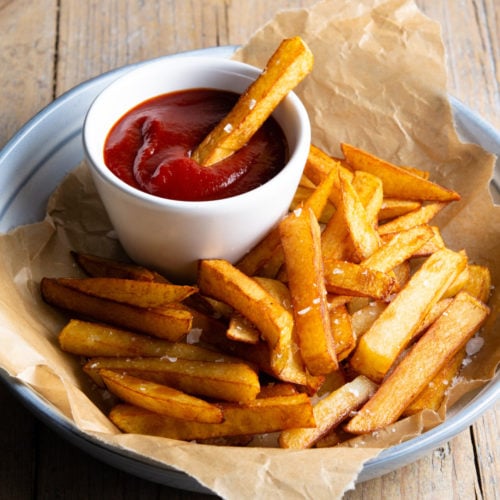
The process of making French fries is relatively simple. First, potatoes are peeled and sliced into thin strips. The strips are then soaked in cold water for several hours to remove excess starch. After soaking, the potato strips are dried and then fried in hot oil until they are crispy and golden brown. They are then seasoned with salt and other spices and served hot.
Variations of French Fries
French fries have become a global phenomenon and are served in many different ways around the world. In France, they are typically served as a side dish or snack and are seasoned with salt and other spices. However, in other parts of the world, French fries have taken on a life of their own.
In the United States, French fries are typically thicker and are often served with ketchup or mayonnaise. In Canada, they are often served with gravy and cheese curds to make a dish known as "poutine". In Japan, French fries are often served with mayonnaise and seaweed flakes.
The Health Effects of French Fries

While French fries are delicious, they are not the healthiest food option. They are typically high in calories, fats, and sodium, which can lead to weight gain and other health problems if consumed in excess. However, there are ways to make French fries healthier.
One way to make French fries healthier is to bake them instead of frying them. This reduces the amount of oil and calories in the dish. Another way to make French fries healthier is to season them with herbs and spices instead of salt.
In Conclusion
French fries are a beloved snack and side dish all over the world. In France, they are known as "pommes frites" and are typically thinner and crispier than the American-style fries. While they are not the healthiest food option, there are ways to make them healthier. French fries have become a global phenomenon and are served in many different ways around the world.
Related video of French Fries In French Language

The French Revolution was a period of radical social and political upheaval in France from 1789 to 1799. It marked the end of the Bourbon monarchy and the beginning of the French Republic. The French flag during this period underwent several changes, reflecting the turbulent nature of the revolution.
The First French Flag

The first French flag during the revolution was the tricolor, which was adopted on July 14, 1789, the same day the Bastille was stormed. The tricolor was a combination of the royal colors of France, red and blue, with the color of Paris, white.
The tricolor quickly became a symbol of the revolution and was flown by revolutionaries throughout France. It was also flown by French troops during the Napoleonic Wars and eventually became the official flag of France.
The Second French Flag
The second French flag during the revolution was the "tricolor with the arms," which was adopted on October 24, 1790. This flag featured the tricolor with the addition of the French coat of arms in the center.
The "tricolor with the arms" was intended to represent the new French nation and its values. However, it was unpopular with many revolutionaries who saw it as a symbol of the old regime. It was eventually replaced by the original tricolor.
The Third French Flag
The third French flag during the revolution was the "tricolor with the sans-culottes," which was adopted in 1792. This flag featured the tricolor with a Phrygian cap, which was a symbol of the radical Jacobin faction of the revolution known as the sans-culottes.
The "tricolor with the sans-culottes" was intended to represent the radical ideals of the revolution, including liberty, equality, and fraternity. It was flown by French troops during the early years of the revolution but was eventually replaced by the original tricolor.
The Fourth French Flag

The fourth French flag during the revolution was the "tricolor with the eagle," which was adopted in 1794. This flag featured the tricolor with a golden eagle in the center, which was a symbol of the Napoleonic Empire.
The "tricolor with the eagle" was intended to represent the new French Empire and its military might. It was flown by French troops during the Napoleonic Wars but was eventually replaced by the original tricolor.
Conclusion
The French flag during the revolution underwent several changes, reflecting the turbulent nature of the period. The tricolor, which was adopted on July 14, 1789, remains the official flag of France to this day.
Related video ofFrench Flag During The French Revolution
Water is a vital component of life, and it exists in different states depending on the temperature. One of the most critical temperatures for water is its freezing point. In Celsius, the freezing point of water is 0 degrees. This article will explore what happens when water freezes in Celsius.
The Science Behind Freezing Water in Celsius
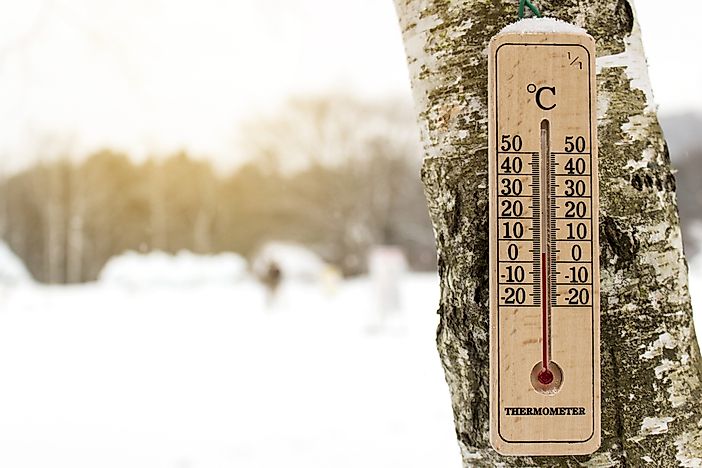
Water is composed of two hydrogen atoms and one oxygen atom, and it is a polar molecule. The hydrogen atoms have a partial positive charge, while the oxygen atom has a partial negative charge. This polarity allows water molecules to form hydrogen bonds, which are responsible for its unique properties such as high surface tension and high boiling point.
When water is cooled to 0 degrees Celsius, the hydrogen bonds between the water molecules start to arrange themselves in a crystalline structure. This structure is what we know as ice. The ice crystals continue to grow as the temperature drops further below zero degrees Celsius.
The Effect of Pressure on Freezing Water in Celsius

Pressure can also affect the freezing point of water. When the pressure on water is increased, its freezing point decreases. For example, at a pressure of 1 atmosphere, the freezing point of water is 0 degrees Celsius. However, at a pressure of 200 atmospheres, the freezing point of water can be as low as -20 degrees Celsius.
The Importance of Freezing Water in Celsius

The freezing of water in Celsius has numerous applications in our daily lives. For example, the formation of ice on lakes and rivers provides a habitat for various organisms. Ice also has recreational uses, such as ice skating and ice fishing. In addition, the freezing of water is essential in many industrial processes such as refrigeration and cryogenics.
The Formation of Ice Crystals in Freezing Water in Celsius

As mentioned earlier, ice crystals form as water molecules arrange themselves in a crystalline structure. The shape and size of the ice crystals depend on various factors such as the temperature and the presence of impurities in the water. For example, pure water at a temperature of -10 degrees Celsius will form hexagonal ice crystals.
The Dangers of Freezing Water in Celsius

While the freezing of water in Celsius has many benefits, it can also be dangerous. Ice on roads and sidewalks can cause slips and falls, leading to injuries. In addition, frozen pipes can burst, causing water damage to homes and buildings. It is essential to take precautions during the winter months to prevent such incidents.
The Bottom Line

The freezing of water in Celsius is a fascinating and critical phenomenon that affects our daily lives in many ways. From the formation of ice crystals to the dangers of frozen pipes, it is essential to understand the science behind this process. By taking precautions and understanding the properties of frozen water, we can appreciate its benefits while avoiding its dangers.
Related video of Freezing Water in Celsius
ads
Search This Blog
Blog Archive
- August 2022 (31)
- July 2022 (31)
- June 2022 (31)
- May 2022 (31)
- April 2022 (29)
- March 2022 (31)
- February 2022 (28)
- January 2022 (31)
- December 2021 (7)
About Me
